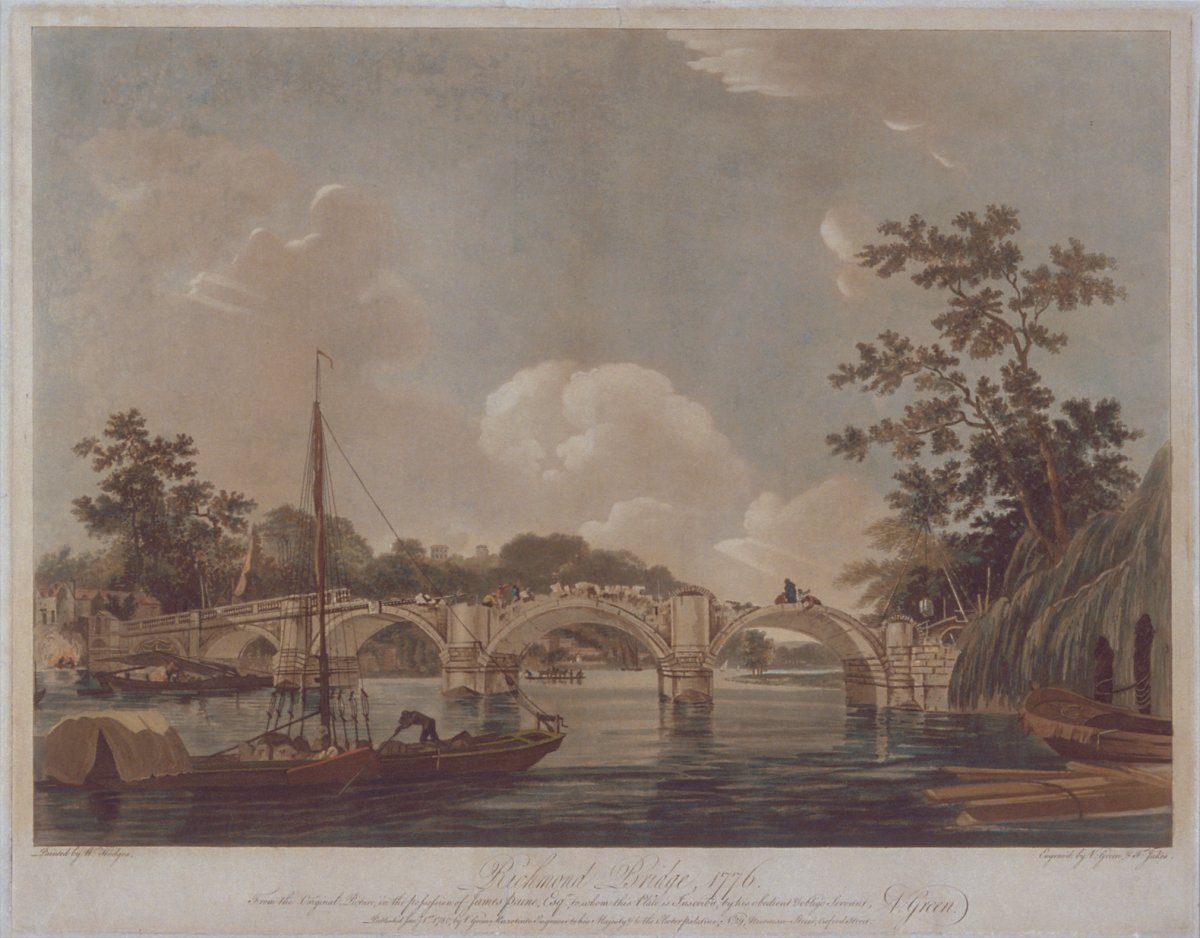Richmond Bridge, 1776
William Hodges (1744 - 1797)
Valentine Green (1739 - 1813)
Francis Jukes (1745 - 1812)
Coloured aquatint
published 1 January 1780
-
About the work
- Location
-
Country: UK
City: London
Place: Government Art Collection
-
About the artist
William Hodges is known for his paintings of Indian subjects and for his important work as the official artist on board the ‘Resolution’ during Captain Cook’s second expedition to the South Pacific between 1772 and 1775. He was apprenticed to the British landscape painter Richard Wilson and was relatively unknown when he was chosen to accompany Cook; on his return, the Admiralty commissioned him to produce paintings based on his work in the South Pacific. Hodges was made a Royal Academician in 1787, the same year in which this painting was exhibited. His career coincided with both the expansion of British imperialism and colonial presence and the development of the British art world following the founding in 1768 of the Royal Academy.
Valentine Green, engraver of portraits and historical subjects after works by his contemporaries, was born at Salford, Worcestershire. He was intended for a career at the Bar, but without his father’s consent, became apprenticed to an obscure line engraver in Worcester. When he came to London in 1765 he began working in mezzotint and engraved nearly 400 plates over the next 40 years. In 1775 he was elected an Associate of the Royal Academy and was appointed Mezzotint Engraver to George III. In 1789 he obtained the exclusive privilege of engraving the pictures of the Dusseldorf, but was ruined when the city was besieged in 1798. In 1805 he was made Keeper of the newly founded British Institution, a post he retained until his death.
Aquatint engraver Francis Jukes was born in Martley, Worcestershire. Nothing is known of his parents. He initially worked as a topographical painter, before becoming one of the first British aquatint engravers. He is thought to have learnt the method from Paul Sandby and some of his first aquatints are after Sandby’s designs. Dukes mainly produced prints of landscape or seascape subjects. He illustrated the Rev. William Gilpin’s ‘Observations on the River Wye’ (published 1782). His early prints were published in collaboration with Valentine Green and he later collaborated with Robert Pollard. Illness towards the end of his life may have been caused by fumes from the acid he used in the aquatinting process. He died in 1812, aged about 67.
-
Explore
- Places
- Subjects
- Materials & Techniques
-
Details
- Title
- Richmond Bridge, 1776
- Date
- published 1 January 1780
- Medium
- Coloured aquatint
- Acquisition
- Purchased from Frank T Sabin, February 1958
- GAC number
- 4536